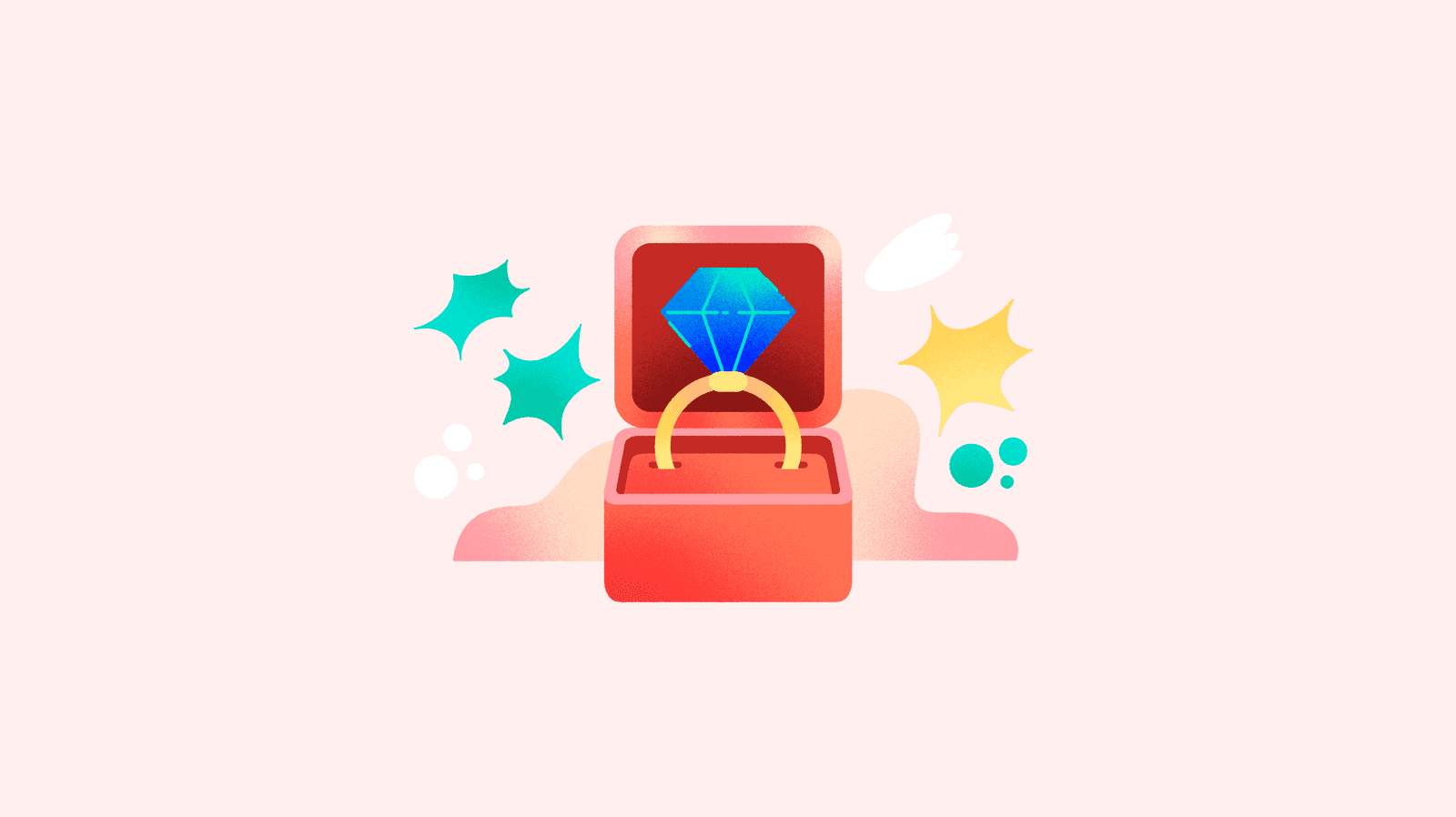
Selling jewellery online is a goal that has long been avoided by jewellery manufacturers and retailers. Where is the magic of looking at small, delicate jewellery in a virtual channel? How do you choose pieces and gifts of sentimental value without being able to compare them in person?
While all these doubts are legitimate, there are clearly more and more people who buy their jewellery online. Even among high-end niches, a type of clientele that sometimes prefers to avoid going shopping in person. Moreover, even when a customer's ultimate goal is to see and choose their jewellery in person, she will probably make a prior consultation among many brands and options in online channels.
For these reasons, both jewellery manufacturers with decades of experience in the industry and newcomers, should value the digital channel as the future of opportunities.
Let's take a step-by-step look at what you need to leverage to make your online jewellery catalogue stand out more and be appreciated as a high-end experience.
Study your niche and tailor your messages
As we mentioned before, selling jewellery made from recycled sea stones is not the same as selling bracelets set with real rubies.
Within the jewellery sector there are different niches with very specific audiences. This is good, because it makes it much easier to identify your potential buyers, analyse their trends and consumption habits, and tailor your message and aesthetic to the kind of experience they expect to find.
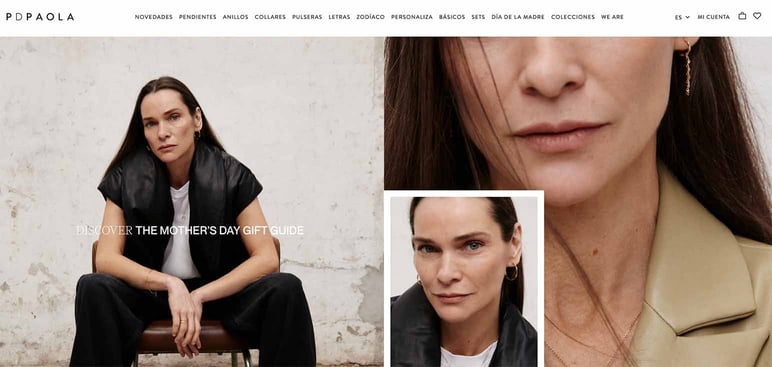
Ask yourself: what kind of person uses this type of jewellery? Is it young or more of an adult? Does she get jewellery for personal use or as a gift? Does this type of buyer prefer online channels, or a more personalised assistance? What is the differential value of the type of jewellery I offer for this type of customer?
This is the first step because the buyer you are targeting will determine all the other strategies of your ecommerce jewellery sales.
Choose the channels that better represent your brand
For specific audiences, it is usually not necessary to develop a very complex omni-channel strategy, although it is advisable to position your brand on several channels and be present on the shopping platforms customers use the most.
For example, small sellers often use marketplaces such as eBay or Etsy, where they often track products for their target buyers. A jewellery brand that wants to convey a more professional appearance will need to offer its own catalogue.

The channels for jewellery ecommerce sales that are most often integrated are:
- Marketplaces: From independent sites to large international corporations such as Amazon, where some jewellery brands choose to both sell their products on their own profile and allow other retailers to sell their products.
- Branded online shop: Creating your own ecommerce is the best way to control your brand image and branding, as well as building trust with buyers. Jewellery buyers often look for the exclusivity and quality that large marketplaces do not offer.
- Social media: Being present on the most visual social media platforms is essential to building your audience, and getting your products shared and purchased. Through in-app purchases such as Instagram and Facebook, you can generate an interesting sales channel, especially if you combine it with influencers collaborations.
Deliver brilliant product content
Your product content is going to catch the eye of shoppers for two reasons: because it reflects your brand voice (which should be what they expect to read, more casual or elegant), and because of the quality and confidence that the data and therefore the product itself conveys.
Jewellery product cards require the most attention, especially for more expensive pieces, because the customer must be very convinced before buying. The ideal for any online jewellery shop is to have a PIM (Product Information Management) that makes it easy to gather and complete all the necessary product information for ecommerce. And also for multichannel strategies, as it allows you to synchronise and send this data to all channels, such as marketplaces, digital catalogues, suppliers...
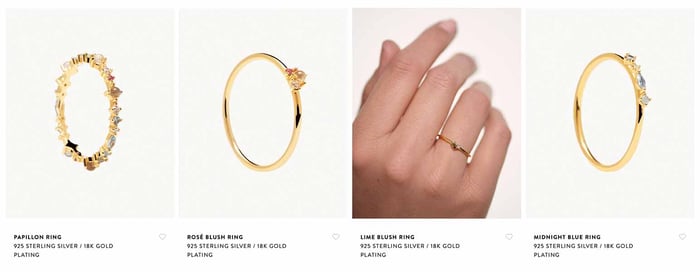
Always include in your product information:
- Original and persuasive product descriptions.
- High quality images.
- All variants of each product.
- Access to detail, both in technical data (materials, dimensions) and in the jewellery itself (through zoom, 360º views...).
- Declaration of sustainability and manufacturing, increasingly important issues for conscientious buyers.
- Basic information on purchasing, shipping, exchanges and returns.
Create an easy and trustworthy shopping experience
Product content impacts on this customer experience, as complete data inspires trust, avoids customer service queries and reduces the number of returns and exchanges.
On the other hand, the design of your online jewellery shop should offer a simple, easy and complete navigation of your catalogue.
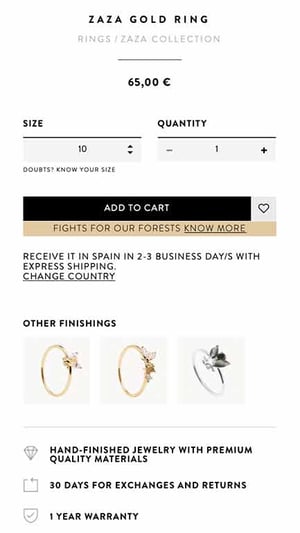
Never overlook in your jewellery ecommerce:
- Personalised URLs, which avoid duplication of products and pages.
- Mobile optimisation.
- A simple, PSD2-compliant checkout.
- A variety of integrated payment systems.
- Upsell and cross-sell functionality to suggest related products.
- Featured promotions, collections and new products.
- Full FAQ section on browsing, purchasing, exchanges and returns.
Promote your brand tastefully and effectively
Jewellery is a product that conveys a sense of luxury, even at low prices. Each piece is associated with a very distinct personality, from minimalism to gothic style. Therefore, your marketing actions should be in line with that brand aesthetic and tailored to your clientele.
When creating your branding and communications, always combine these four channels:
- Email, through personalised campaigns and emails specifically designed for abandonment, recurring customers or those who need loyalty.
- Social networks, as we already mentioned above, to gain attention through key influencers in your product niche and highly visual posts, which regularly feature your best sellers, promotions, new launches or seasonal collections.
- SEO, key to positioning your online shop with product information adapted to the keywords of your niche, but also in ads you prepare on Google and social networks.
- Customer reviews, widely read in online jewellery shopping. Customers need to be sure that products meet the quality level advertised, especially when prices start to get higher. Encourage reviews from your buyers, and if any negative ones appear, deal with them professionally and quickly so that they don't have a negative impact on your reputation.
Make a statement in your shipments
Finally, the moment the jewellery arrives in the hands of the shopper, you are making or breaking an online sale. And is there anything more recognisable to jewellery lovers than the little blue boxes at Tiffany's?
You don't have to imitate the big jewellers with expensive boxes, but packaging is certainly a fundamental part of the jewellery buying experience. And these boxes also help to care for the pieces, so you are providing your customers with a valuable and useful extra that they will appreciate.
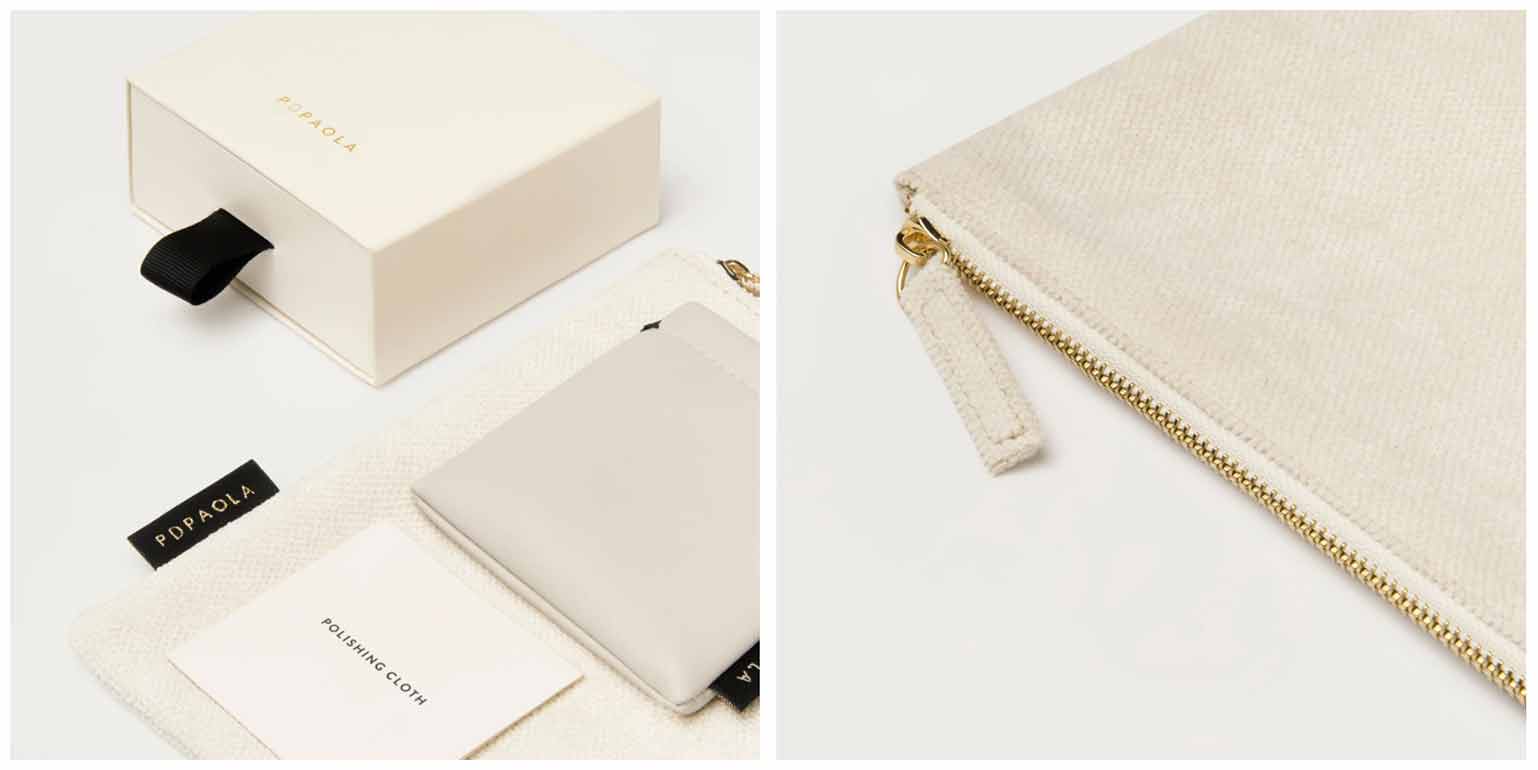
In addition to careful packaging that is also in line with your branding, another key to shipping is safety. Always use reliable courier services and, in the case of really valuable pieces, always include tracking and research about insurance for lost or stolen items during transport.
Launching your jewellery ecommerce website if you manufacture your own collection or sell products from other brands is a resounding yes in an increasingly digital present. Enhance your brand image while reaching a wider audience, and get it done in no time with a PIM system that makes your product content ready to share anywhere.
Try it now for free with Sales Layer — we provide you with examples and product templates from your industry, as we have experience in the jewellery industry.




.png?width=520&name=Blog%20Partner%20(3).png)

.png?width=520&name=Blog%20Partner%20(1).png)


